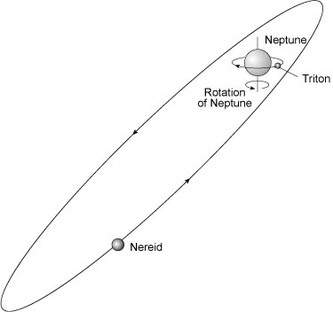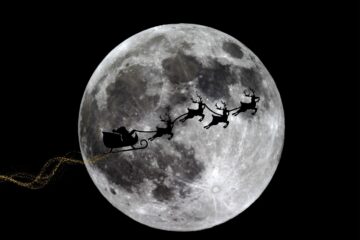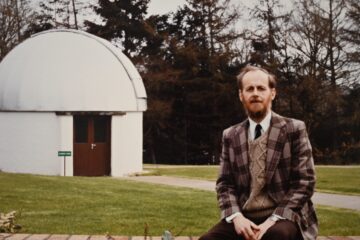Research Astronomer Dr Apostolos Christou reports on a new model to explain the two “oddball’’ moons of Neptune: Triton, a >2000 km diameter satellite that circles Neptune in the opposite direction that the planet rotates; and 300-km Nereid, the planetary moon with the most elongated orbit in the solar system.

Because of its wrong-way-around or retrograde orbit, it is thought that Triton did not form around Neptune but was instead captured. A leading capture hypothesis was proposed by Craig Agnor (Queen Mary University of London, UK) and Douglas Hamilton (U. Maryland, USA) in 2006 and features a binary Trans-Neptunian Object (TNO) coming in from heliocentric orbit. The gravitational interaction between the binary TNO and Neptune leads to one of the binary components getting captured around Neptune, becoming Triton.
The binary splitting model works well for Triton, but is problematic for Nereid. Because both moons represent anomalies in the system, one can reasonably ask if a single mechanism can reproduce their unusual orbits at the same time, in effect killing two birds with one stone. To investigate, Daohai Li, Christou’s former student and now a Post-Doctoral Research Associate at Lund Observatory in Sweden, ran computer simulations to see what the effect might be of a planetary-sized body flying close to Neptune and upsetting its satellites. A close encounter between planets – especially giant planets – would seem outlandish, but might have been commonplace in the distant past according to a narrative of early solar system evolution known as the Nice model.
Li’s simulations showed, perhaps not surprisingly, that such an encounter will act to disturb any existing satellites around Neptune. While some satellites will keep orbiting the planet in a prograde direction, others will be flipped over and become retrograde, like Triton. This state of affairs is not tenable because now the moons begin to collide, destroying each other in the process. Triton, in particular, should easily absorb small moons and this begs the question on how Nereid survived the onslaught.

It turns out that each small moon hitting Triton will nudge its orbit a tiny bit towards Neptune until, eventually, orbits of the remaining moons no longer cross Triton’s. The implication is that there initially must have been many more moons – perhaps 20 more – around Neptune that were “sacrificed’’ in order to preserve Nereid.
If this scenario is correct, Nereid must have formed closer to Neptune than its current location and may have experienced significant thermal evolution due to tides. Finding evidence of geologic activity on Nereid’s surface by a spacecraft mission to Neptune could therefore be used to validate the model. The mechanism proposed by Li & Christou should also operate on moons around extrasolar planets and future surveys will test this.
The work was published in the April issue of The Astronomical Journal.
A link to the paper, accompanied by a technical summary, may be found here: https://iopscience.iop.org/article/10.3847/1538-3881/ab7cd5
For more information, please contact Dr Apostolos Christou (email: apostolos.christou@armagh.ac.uk)



0 Comments